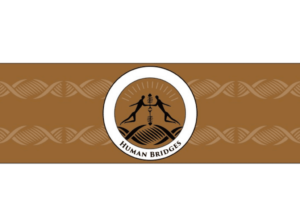What Happened To Our Ape Ancestors?
No Comments yet 06 – 03 -2024 ~ Millions of years ago, in the Miocene Epoch (23 to 5.3 million years ago), about 100 species of apes roamed Europe, Asia, and Africa. Just a few million years later, this number had drastically declined, presenting fascinating questions for today’s paleoanthropologists.
06 – 03 -2024 ~ Millions of years ago, in the Miocene Epoch (23 to 5.3 million years ago), about 100 species of apes roamed Europe, Asia, and Africa. Just a few million years later, this number had drastically declined, presenting fascinating questions for today’s paleoanthropologists.
What happened to the extinct species, which have been identified in Eurasian fossil remains over recent decades? How did some apes of these species persist and evolve? And, the most hotly debated question: Did the apes who were our human ancestors originate in Africa or Eurasia?
The traditional view, following Darwin, hypothesizes an African origin for both humans and modern apes. More recent fossil evidence supports a Eurasian origin for the ancestors of humans and modern apes, which migrated back into Africa, about 7 to 9 million years ago, before modern humans evolved from them. But even proponents of this Eurasian origin view acknowledge that not enough is known yet to be certain.
The Miocene Environment
The Miocene Epoch is known for its abundance of fossils from different geographical regions, including a wide variety of mammals. Over the epoch’s nearly 18-million-year span, the Earth’s climate and geography changed dramatically. The beginning of the epoch was warmer than the prior Oligocene, the mid-Miocene period is known as the Miocene Climatic Optimum, and the late Miocene was marked by cooling.
Over this epoch, the continents, seas, and elevations were shifting toward their present positions. As sea levels dropped around 16.5 million years ago, a land bridge between Africa and Eurasia permitted a migration of many species from Africa to Eurasia including apes. Fossil evidence suggests that some ape species made their way from Africa through Saudi Arabia.
Over a few million years in their new Eurasian environment, ape species proliferated and thrived, developing new physical characteristics, including larger brains. Toronto University anthropologist David R. Begun described these evolutionary changes as a preadaptation to “coping with the problems of a radically changing environment.”
Later in the Miocene, the seas rose and cooler temperatures transformed the subtropical forest habitat in Eurasia into dry grasslands with more seasonal conditions. The many species of apes that had flourished in Eurasia no longer had an abundant food supply of fruits and an ape-friendly habitat. As Begun wrote in a 2006 Scientific American article, “Climate changes in the Late Miocene brought an end to this easy living.”
The available Eurasian fossil data indicate that many ape species died out by about 9 million years ago. But a few species, including our human hominid ancestor, were able to adapt to the vast environmental changes and made their way south, back to Africa. (Hominid is the term for great apes, humans, and all their fossil relatives.)
The fossil record from Eurasia provides clues to how some ape species developed those traits that allowed them to adapt to climate and environment changes, in order to migrate into Eurasia and later back to Africa.
Who Were the Miocene Apes?
Paleoanthropologists identify ape population groups from millions of years ago by meticulously analyzing data from fossil remains, often only from fossil fragments. From teeth, jaw, brain size, bone shape, slope of skull and nose, and other physical clues, scientists differentiate species, characterize evolutionary changes, and infer behavior.
Some fossils of Miocene apes have characteristics that begin to resemble those of humans, such as more modern teeth and jaw structure or whether they got around via ground or treetops. Paleoanthropologists have systemized lists of species and families on timelines, but interpretations of the role of Miocene apes in hominid history vary, and uncertainties persist.
David Begun identified the genus (family of closely related species) of Griphopithecus as “the best candidate for the earliest hominid” in his 2010 analysis of Miocene hominids in the Annual Review of Anthropology.
Griphopithecus appeared about 16 million years ago in Germany and Turkey. Their thickly enameled teeth and powerful jaws, Begun suggests, gave them the ability to take advantage of resources in varied environments. When the climate became drier, the Griphopithecus could adapt from eating soft fruit to a harder food supply like nuts and roots.
Our Human Ancestors
Other Miocene ape families also developed characteristics that make them our potential human ancestors. The Dryopithecus genus had physical aspects that resemble those of early humans, such as a face profile that tilts downward and a larger brain case. A related Miocene ape found in Greece, Ouranopithecus, also had some more modern ape characteristics.
More recently, a finding from central Anatolia in Turkey, reported in Communications Biology in 2023, presents more evidence of ape development in the Miocene with more human-like characteristics. A well-preserved skull initially thought to be Ouranopithecus, was found to have distinctive enough characteristics to be named Anadoluvius.
Many questions remain. For example, when did the adaptations (like knuckle-walking) occur that precede bipedalism, getting around upright on two feet?
Paleoanthropologist Robert Foley suggests that “[t]he significant factor that is key to understanding the emergence of the early bipedal hominins is the change in climate and environment that occurs at the end of the Miocene and into the Early Pliocene.” He explains that it led to a pronounced global cooling, and generally in Africa, a drier climate that reduced forest cover and expanded the number of savanna environments. This provided a general evolutionary “basis for adaption to terrestrial environments,” rather than arboreal ones.
A Plausible Scenario
The overall picture of when the specific characteristics of our human ancestors appeared has a plausible answer:
The proliferation of ape families and species in Eurasia, as documented in hundreds of fossils, supports the scenario that apes migrated from Africa around 16 million years ago, thrived and diversified in Eurasia along with many other animals, and then, using their evolutionary adaptations, began to make their way back to Africa at the end of the Miocene, about 7 million years ago, when the climate changed.
This is a round-trip scenario. Apes originated in Africa and migrated to Eurasia where they developed the preconditions for evolving into humans. Then the ape species that survived climate change returned to Africa where the human lineage developed.
Another piece of evidence supporting this hypothesis is that there is no fossil evidence of great apes in Africa between about 13.5 million years ago and 7 million years ago—the period when families of these apes proliferated in Eurasia. This is despite many known African fossil sites from that period.
A Continuing Evolution
The scenario presented here took place over millions of years. Paleoanthropologists are not in complete agreement about where human-like characteristics developed. It will take the discovery of many more fossils from Eurasia and Africa to settle this history.
Meanwhile, as some have pointed out, there’s a lesson here for today’s evolving humans facing climate change, other environmental changes, and the challenge of space exploration. How will today’s human beings adapt?
By Marjorie Hecht
Author Bio: Marjorie Hecht is a longtime magazine editor and writer with a specialty in science topics. She is a freelance writer and community activist living on Cape Cod.
Source: Human Bridges
Credit Line: This article was produced by Human Bridges.
You May Also Like
Comments
Leave a Reply








